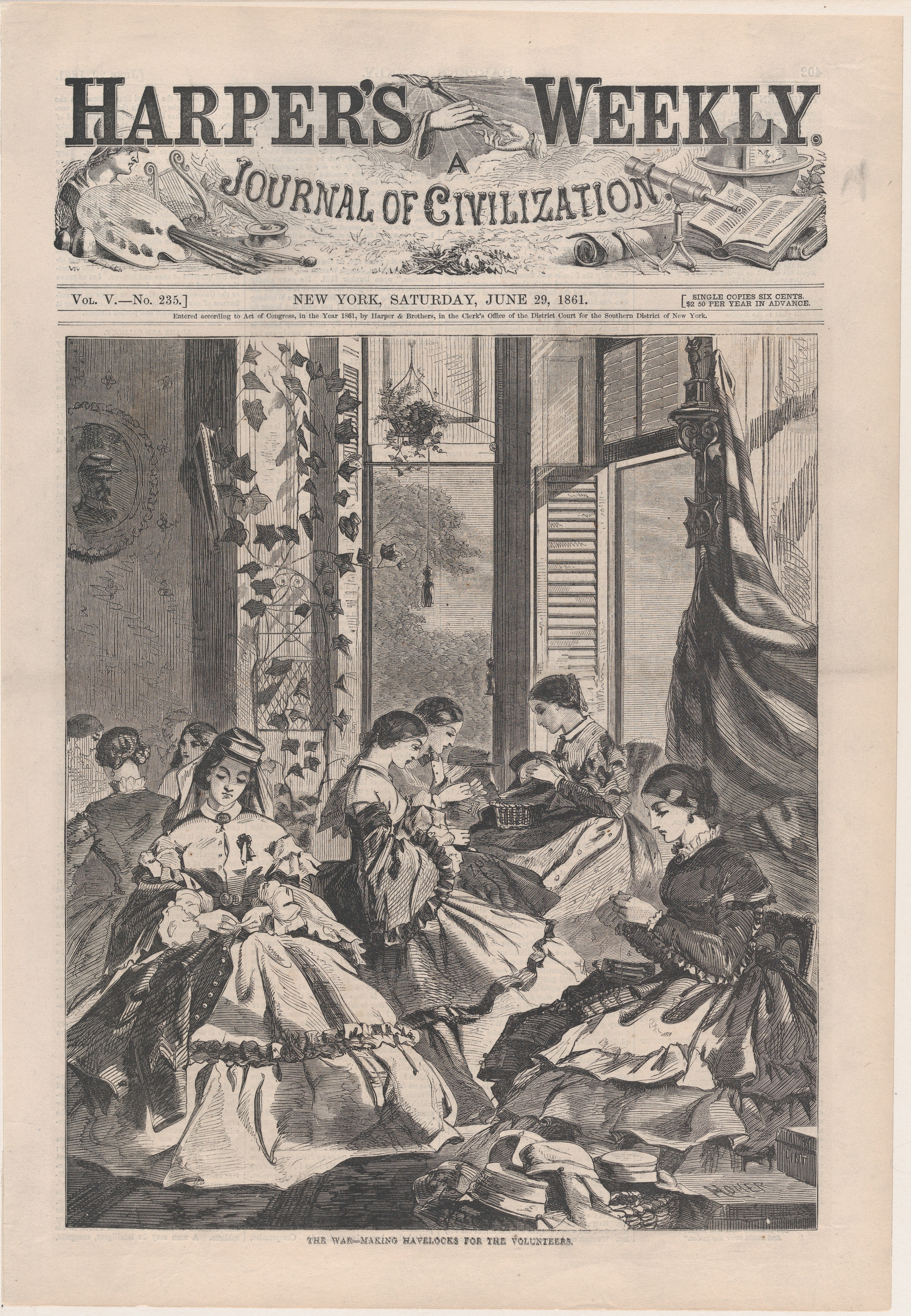The War – Making Havelocks for the Volunteers (from "Harper's Weekly," Vol. 5, no. 235, cover)
Not on view
In 1857 Winslow Homer began his eighteen-year career working as an illustrator for Harper’s Weekly, which launched in New York in the same year. The publication was one of the most successful examples of an illustrated weekly, a type of magazine dominated by images rather than text. Weeklies could be printed quickly, cheaply, and in large quantities thanks to recent advances in wood-engraving technology, in which an image was translated onto a wood block and then cast electrolytically from a wax mold. After working as a freelance illustrator during the early years of his career, Homer was hired by Harper’s as a full-time correspondent upon the outbreak of the American Civil War (1861–65). His work for the weekly ranges from wartime scenes observed from the front to nostalgic views evoking America’s agrarian past.
Designed in June 1861 during the first weeks of the Civil War, this print shows young women gathered indoors on a summer afternoon to sew uniforms for Union soldiers. They make havelocks (cloth covers for military caps with long flaps at the back to protect the neck from the sun), and one of the seamstresses models a finished example. The lack of a male presence is a reminder of the men who have departed for the army and left wives, sisters, and daughters behind. The shadowed portrait of a soldier on the wall foreshadows the loss of life to come.
Due to rights restrictions, this image cannot be enlarged, viewed at full screen, or downloaded.
This artwork is meant to be viewed from right to left. Scroll left to view more.



